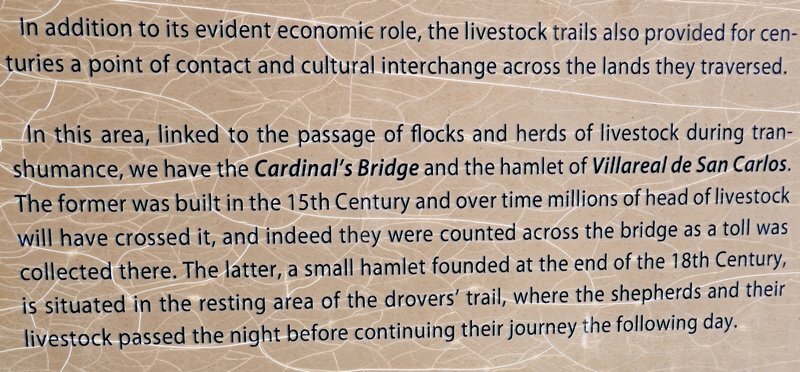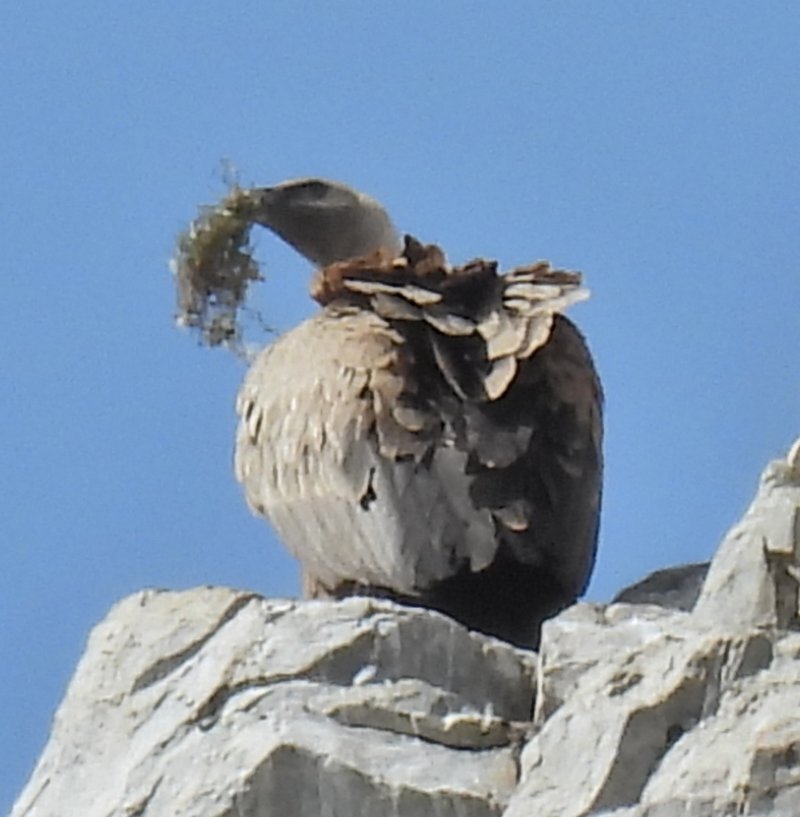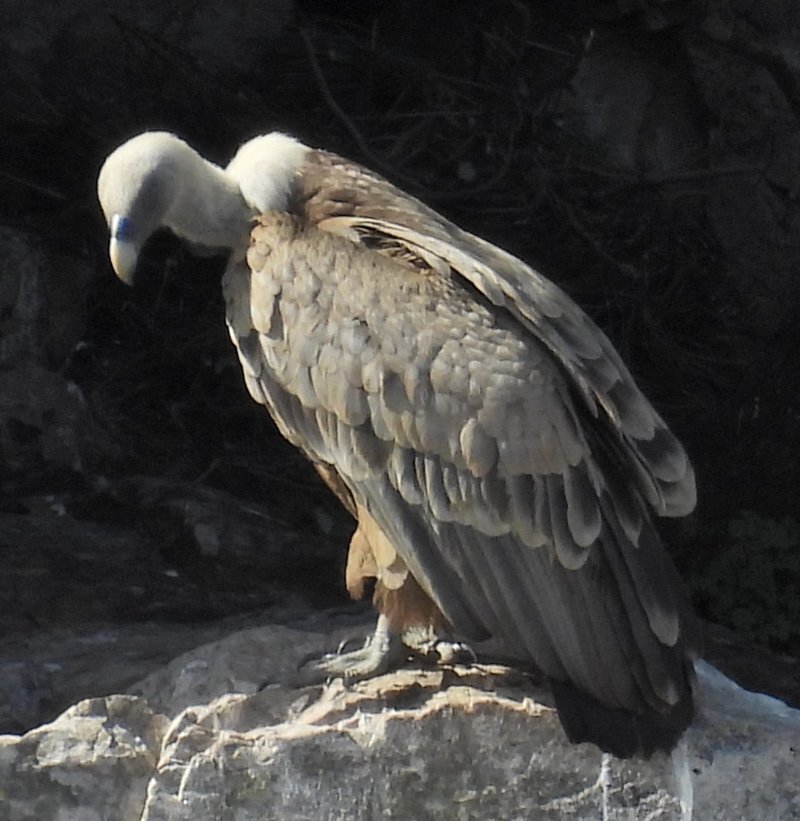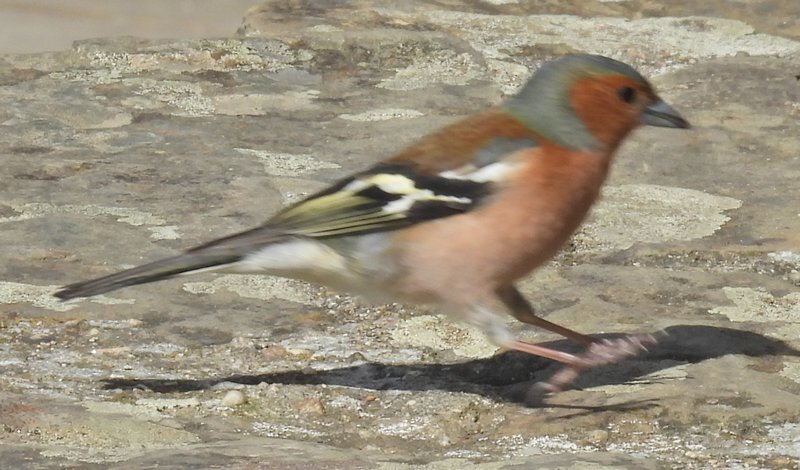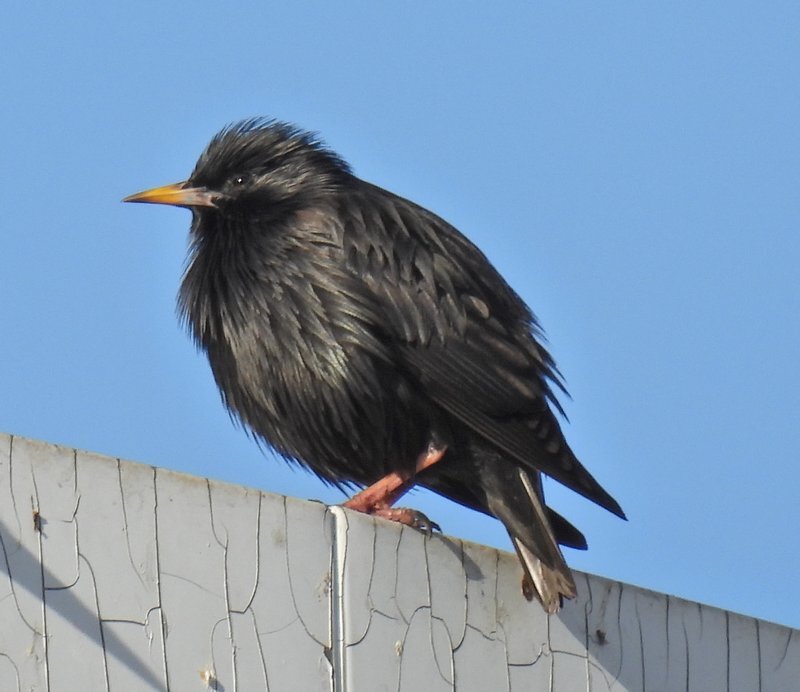February 26, 2025
Day 9: Plasencia to Torrejon el Rubio
| Heart | 0 | Comment | 0 | Link |
Plasencia struck us a being just as attractive this morning as yesterday, as we headed down its narrow streets toward the wall.
Once we passed through the wall, of course, the fairy tale ended and we were back in the normal world of traffic, but also of grocery stores. We needed a grocery store because the breakfast that had been supplied by the hotel made the skimpy French ones look generous.
We were soon truly on our way, turning off the busy road and heading directly for the Montfrague National Park. Montfrague is an amazing natural area, with uniquely craggy mountains, and centred on the confluence of the Tagus and Tietar rivers. These rivers run east-west, and we would be descending from the north, to run into them. The main claim to fame of Monfrague is sites along the rivers where many types of raptors and vultures soar among the crags.
Ther road we were on quickly distinguished itself as super pleasant. It was paved, with a decent shoulder and not too much traffic. The landscape we passed through was what is known as dehesa in Spain, montado in Portugal. This refers to pasture land that is liberally sprinkled with trees, giving it more than one purpose. It's a unique thing, found here in Extremadura and in Portugal:
The trees are commonly oaks, such as cork oak.

| Heart | 0 | Comment | 0 | Link |

| Heart | 2 | Comment | 0 | Link |

| Heart | 2 | Comment | 0 | Link |

| Heart | 0 | Comment | 0 | Link |
We soon came to the park interpretation centre at the north entrance. This was a lovely building surrounded by dehesa, with numerous trails around it, featuring interpretive signs. Inside, a really nice park ranger (or whatever they are called here) went over the park map with us, describing the five major recommended routes through the territory. This had us kicking ourselves for not allowing an extra day or two here, since it is all fascinating. Instead we would be blowing straight south, crossing the river Tajo, and squirting out the bottom, really only touching on one major raptor/vulture viewing spot.
Well, we did get to look in this centre as well, and it was so impressive. There were many large screens displaying film of the birds and animals of the park, in a well laid out and welcoming space. Something that also impressed me were filmed interviews with community leaders discussing the park and its organization. I got the impression from this (with no reason to doubt its accuracy) that the park has always had complete local support. I think that's great, because this place really deserves it.
(The idea of local support is a bit tricky, because the park contains almost no people. This is unlike some Canadian national parks, that have major towns within. This park has only one settlement - Villareal de San Carlos - and its population is given as 28.)
Here are some quick snaps from some of the screens, plus examples of interpretative signage out on the grounds of the centre.

| Heart | 0 | Comment | 0 | Link |
Not far from the centre we spotted our first soaring bird, which turned out to be a Griffon Vulture. This was not unusual, because as it happened it was only these darn Griffons that we saw during our pass through the park.

| Heart | 3 | Comment | 2 | Link |
1 month ago
1 month ago
Although the park is truly unpopulated, it does of course have some human history. Mainly it was sheep and shepherds that passed through here. The little town of Villareal de San Carlos housed the shepherds, in unique looking stone huts. And there is an old bridge at the river that facilitated the passage of sheep.

| Heart | 0 | Comment | 0 | Link |

| Heart | 2 | Comment | 0 | Link |
We came at last to our one major lookout, which was called Salto de Gitano - the Gypsy Jump. Ther name comes from a legend about a gypsy bandit that attacked and killed some horse traders nearby.
The lookout is not remarkable for gypsy bandits, though, but for the quartzite spires and the birds that soar overhead and that land on the ledges. As it happened, every soaring or landing bird that we saw was a Griffon. Have a look:
We continued, sadly, out of the park, on our way to the little hamlet of Torrejon el Rubio. We were still looking for some of the other iconic birds of the region, like the Black Stork, but no luck. However we did come up with these:
Birds were not quite the only "wildlife" around, as we passed through areas with lots of sheep and also cattle. We don't know the cattle varieties here, but they sure are cute:
Right by our hotel in Torrejon el Rubio, we also found lots of Iberian ham, on the hoof:
Our hotel in the little town is old, and certainly has no elevator. After our first day of real cycling we certainly felt the climb up to our room. The steps were nice, though, made of marble. I got an extra good look at them as I had to carry our heavy bikes up one flight of them, to a reception room where they will happily spend the night. For our part, after some extended shivering, we discovered the radiator, and are now totally snug. Mornings here have been quite chilly, at 6 degrees, but the days have warmed to about 16, a good cycling temperature.
We are happy about the bird spotting today. We added 4 species, bringing the 2025 total to 100.
Today's ride: 43 km (27 miles)
Total: 120 km (75 miles)
| Rate this entry's writing | Heart | 7 |
| Comment on this entry | Comment | 0 |























